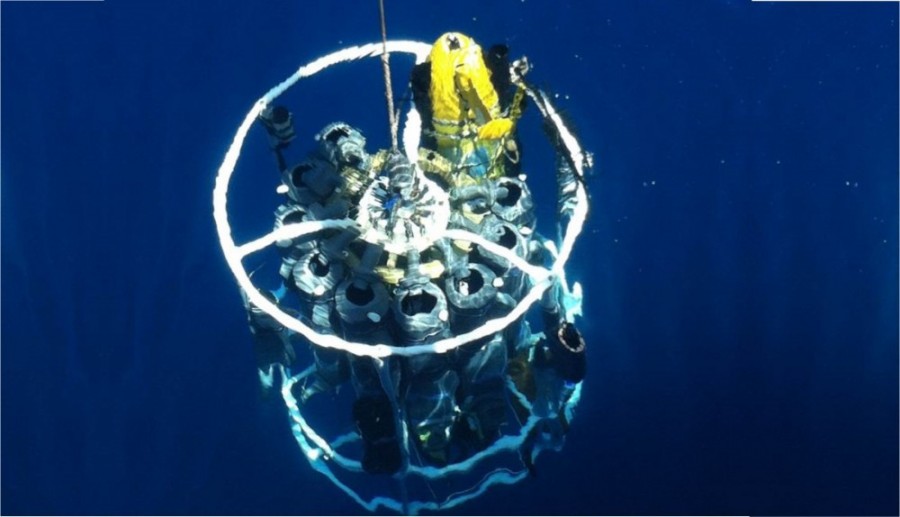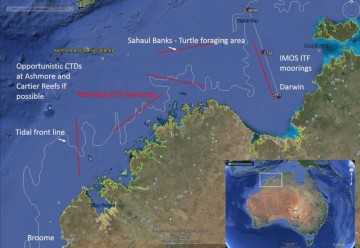Measuring the colour of the ocean: what remote measures reveal about ocean health

An ocean glider supplied by Integrated Marine Observing System (IMOS) attached to a sampling rosette on the AIMS research vessel RV Solander off the Kimberly coast. Photo credit: AIMS/Kathrine Osborne
Measuring the colour of our oceans can reveal a lot about ocean productivity and health. The ocean’s colour is literally a reflection of increasing or decreasing amounts of suspended sediments, bacteria and phytoplankton throughout its depths. Sediments aren’t just mud, they contain vital nutrients for stimulating the growth of phytoplankton and marine bacteria which forms the basis of the marine food chain sustaining the fish we love to eat to the whales we like to watch. It’s important to be able to measure these indicators as often as possible but this is time consuming and expensive, particularly for isolated regions such north west Australia. Therefore, remote measurements of ocean colour, such as those obtained from instruments on ocean gliders and from satellite imagery, are much more cost effective.
In search of truth
However, to gain an accurate understanding of what the measurements by ocean gliders and satellite imagery can reveal, scientists must first ground truth the data by directly comparing remote measures with actual, in-situ concentrations/values in seawater. Therefore, Dr. Paul Thomson (UWA) from the Indian Ocean Marine Research Centre is currently sifting, sorting and measuring Kimberley waters to compare and validate actual data against remotely measured data. With a cacophony of high tech equipment on board, including an ocean glider, the Dr. Who-like ‘DALEC’ that measures sunlight, and other bio-optical instruments, Paul will spend the next two weeks collecting data and water samples of phytoplanktyon, bacteria and suspended sediment off the Kimberly coast and northwards to Darwin.
High hopes and colourful outcomes
It is expected that that the remote measurements by ocean glider and satellite are accurate but can be improved by further understanding how sunlight is absorbed and reflected by seawater and by suspended sediments, bacteria and phytoplankton. By continually validating and improving our remote measurements we can change the way we study the ocean through more cost effective means in isolated regions such north west Australia.
Dr. Thomson acknowledges the captain and crew of the RV Solander, AIMS for ship time and support, IMOS for the ocean glider and the DALEC and thanks Kathrine Osborne, Amanda Parr and Dr. Conrad Speed for assistance onboard.








